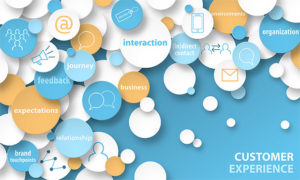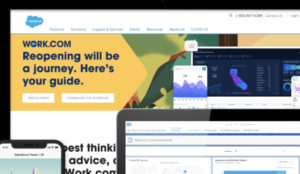As Winston Churchill famously said, “Never let a good crisis go to waste.” Optimistically, out of COVID, the mother of modern crises, we can reasonably expect some upside.
In 2020 I have conducted as much CRM research as I have often produced in several years of more normal times. Vendors have the cash to get research done as well as a belief that, once this is over, they’ll need something new and interesting to tell their markets.
The research shows there’s important and useful information to share so, it’s a good time to offer some findings.
As I wrote in August, despite a 25-year track record, CRM is still a young industry. The surprise in the IDC CRM market share numbers compiled for 2019, the most recent numbers available, is how miniscule the leaders’ shares are. As I wrote then,
For the seventh consecutive year Salesforce leads the pack this time with 18.4 percent of the market. Other big vendors trailing the leader include, SAP 5.3 percent, Oracle 5.2 percent, Microsoft 3.7 percent, and Adobe 3.6 percent.
The other big vendors have a combined market share of 17.8 percent, less than Salesforce but in aggregate the top five vendors command considerably less than half of the market or 36.2 percent.
True, this indicates a vibrant group of smaller and successful vendors like Zoho, but it also begs an important question of why, after all of this time, is there no greater center of gravity in the market? Why is there no 800-pound gorilla with two-thirds of the market share by now?
Need for the Right Tech Tools
Technology changes more rapidly than a business’s ability to absorb it — and even with cloud computing it still takes a long time to get tech into the hands of users. Our research shows that many users, especially those working remotely, are in a position where their tools don’t fit their needs. We have data that corroborates this.
In a study we completed for Zoho (n=510), we discovered that customer facing employees liked their jobs, felt their managers were good and good communicators, and they felt they understood the expectations set by their companies.
In the Zoho study, the biggest complaint was the quality of the technology that employees had to use to do their customer-facing jobs. These people were exceedingly polite, and many offered no opinion of the technologies they used every day even though they could answer all other questions we posed to them. It seemed to us they were saying nothing because they didn’t want to offend.
In another study conducted for Oracle, we discovered even more troubling information. Our subjects all had CRM, but they didn’t like it and felt it was more work to use than it should be. These users rated CRM only fourth in a list of tools they use every day to work with customers. Ahead of CRM in the rankings were generic tools like email.
Let’s Automate Already
The top frustrations that sellers voiced included doing repetitive administrative tasks that could be automated and updating multiple systems that ought to be connected. These two frustrations alone provide a vivid understanding of the state of the art. Repetitive tasks and multiple systems speak of an era when CRM was highly stove piped. The conclusion we draw is that these are the systems many people are still using.
Still, users keep doing the work in front of them. But this means using more labor to integrate data and systems manually when those things should be automated. It results in longer days and some bizarre activities. Indeed, 55 percent of sellers told us they rely on a combination of unintegrated applications. 72 percent of sellers need three or more screens open at one time to do their jobs. Sometimes this involves a personal handheld device.
The result is that people are working whenever and wherever they can — 60 percent say they work in the car, half have worked on vacation, a third (33 percent) have worked while at a social event, 24 percent while at the gym, and one-third have worked in the bathroom. Don’t ask.
What are we going to do about this? Is there a solution?
To a degree, it is what it is. Customer facing jobs, especially sales, involve a modicum of chaos that will always be there. That said, the situation is exacerbated because we’ve been through many generations of CRM and often the generations haven’t provided much benefit to the user. For instance, the great shift from client-server to the cloud, took many years and ultimately saved companies bundles of money. But that was a literal translation that kept stovepipes intact.
We’re just now getting to the point where there’s decent integration or at least the ability to integrate systems; automation for whole processes and data capture and analysis are available but not in many hands yet.
It’s Time to Move on From Legacy Systems
There’s a lot of old CRM out there that’s still running and therefore keeping new systems at bay. The subscription model should be useful here since there’s little sunk cost investment in older cloud systems should a business wish to retool.
It’s clear, though, that many of the workarounds that have kept old systems running have reached the end of the line. If people are already working in their cars, the gym or the bathroom, it’s hard to see how things get any better without replacing systems.
That requires a different approach for the customer. The old adage of “if it ain’t broke, don’t fix it,” doesn’t really apply any more. The software might not be broken but the business processes it regulates is broken in many cases.
COVID has us working from home, at odd hours and straining to get things done. Many of us would like to not have to consider retooling CRM. But there’s never been a better time to do so.
Our processes have changed and may not be able to snap back to a pre-COVID configuration. People who once commuted two hours per day have discovered how nice it is to have that time back. The video conference might not be a perfect thing, but it offers some advantages. In all of this we need to begin thinking of how we take advantage of the situation rather than simply trying to survive.
One positive from all of my research has been observing the attitudes of frontline workers. They’re resilient, like what they do and want to do more. If we didn’t have that no amount of CRM would matter. But with it business is preparing for a strong comeback. If we take advantage of the crisis.





























































Social CRM
See all Social CRM